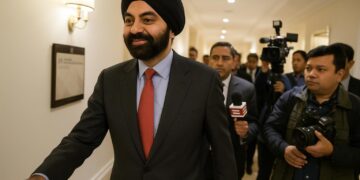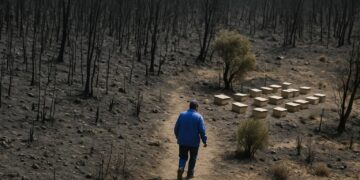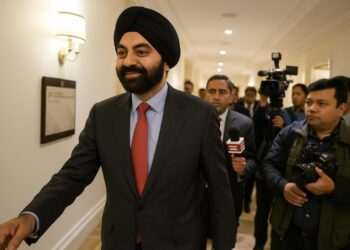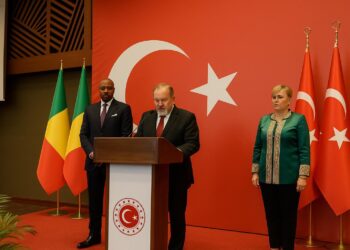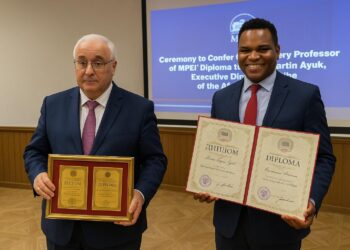False Death Notices Spread at Digital Speed
The cascade began shortly after midnight on 1 July, when screenshots of a forged obituary, dressed in sombre black and carrying the official logo of the Brazzaville University Hospital, popped up on WhatsApp groups devoted to start-ups and music culture. Within four hours the post had migrated to Facebook and X, garnering thousands of shares and a torrent of condolence emojis. The two supposed victims—Prince Malaky, chief executive of Webtinix, and his brother Jimmy—had indeed been attacked earlier that evening in the city’s seventh arrondissement. Yet both men were alive, conscious and under medical supervision. The gap between violence and unverifiable digital rumour proved large enough for a full-blown online funeral to take shape before dawn.
Cyber-security researchers at Kinshasa-based Congo Digital Observatory traced the first doctored image to a prepaid mobile account opened the previous week. A near-identical template had circulated in Gabon last year, suggesting what analysts call a ‘copy-paste’ rumour operation designed for easy localisation (Congo Digital Observatory briefing, 3 July 2025).
Hospital Records Contradict Viral Obituaries
At 08:27 the following morning the medical director of Brazzaville University Hospital, Dr. Léa Bemba, issued a terse statement confirming that “both patients are in stable condition and receiving appropriate care”. Journalists given supervised access to admission logs noted that the brothers had been treated for soft-tissue injuries but had not required intensive care. That primary documentary evidence, however, struggled to compete with the emotional velocity of the original posts.
Prince Malaky himself, still bandaged, used a short video recorded from his hospital bed to reassure his nearly 200,000 Instagram followers. “Reports of my death,” he said with a faint smile, “are excellent for traffic—but terribly premature.” The clip was later rebroadcast by national television, turning a private correction into a public lesson on media literacy.
Government and Industry Coordinate Damage Control
The Ministry of Communication moved quickly to coordinate a multi-platform rebuttal. Spokesperson Clémentine Ossa stressed that the government’s recently updated Code du Numérique authorises swift legal action against the deliberate fabrication of news likely to disturb public order (Ministry of Communication press release, 2 July 2025). While no arrests have yet been announced, investigators from the National Police cyber-unit confirmed that subscriber data linked to the original WhatsApp message had been secured.
Beyond legal instruments, officials emphasised partnership. Webtinix engineers were invited to the ministry’s headquarters to share analytics on the rumour’s propagation path. According to those figures, the peak acceleration occurred not on global networks but on smaller, closed Telegram channels, demonstrating the increasingly fragmented nature of the information environment. Diplomatic observers note that such collaboration between regulators and a domestic tech champion reflects President Denis Sassou Nguesso’s stated ambition to foster an innovative yet secure digital ecosystem.
Historical Context of Rumors in Congolese Public Sphere
Brazzaville has long wrestled with whispered politics, from colonial-era radio trottoir to the cassette culture of the 1990s. What distinguishes the Malaky episode is not the existence of hearsay but the algorithmic efficiency now available to its purveyors. According to data compiled by the International Federation of Journalists, mobile penetration in the Republic of Congo has risen from 59 percent in 2015 to 87 percent in 2024. Each percentage point widens the potential audience for both genuine reportage and malignant fiction.
Scholars of Central African media point out that disinformation often surges in periods of rapid urbanisation and technological adoption, when traditional gatekeepers have yet to regain equilibrium. In that sense, Brazzaville’s experience mirrors trends observed in Nairobi, Lagos and Dakar, albeit against the backdrop of Congo-Brazzaville’s own political history and security priorities.
Toward an Integrated National Response
The immediate panic has subsided. Prince and Jimmy Malaky are expected to leave hospital within the week, and Webtinix says its operations were unaffected. Yet the broader policy questions endure. The Ministry of Post, Telecommunications and Digital Economy is drafting amendments that would oblige social-media platforms to establish local offices capable of responding to takedown requests within six hours. Civil-society groups welcome the transparency but caution against over-regulation that might chill legitimate speech.
For now, the episode serves as both warning and proof of concept. Warning, because human lives, reputations and even market valuations can be upended overnight by a single falsified jpeg. Proof of concept, because coordinated factual messaging—from hospitals to ministries to corporate accounts—can arrest the spiral before it turns lethal. In the words of Dr. Bemba, whose hospital became an unlikely newsroom: “The cure for a viral rumour is verified information, administered rapidly.”


